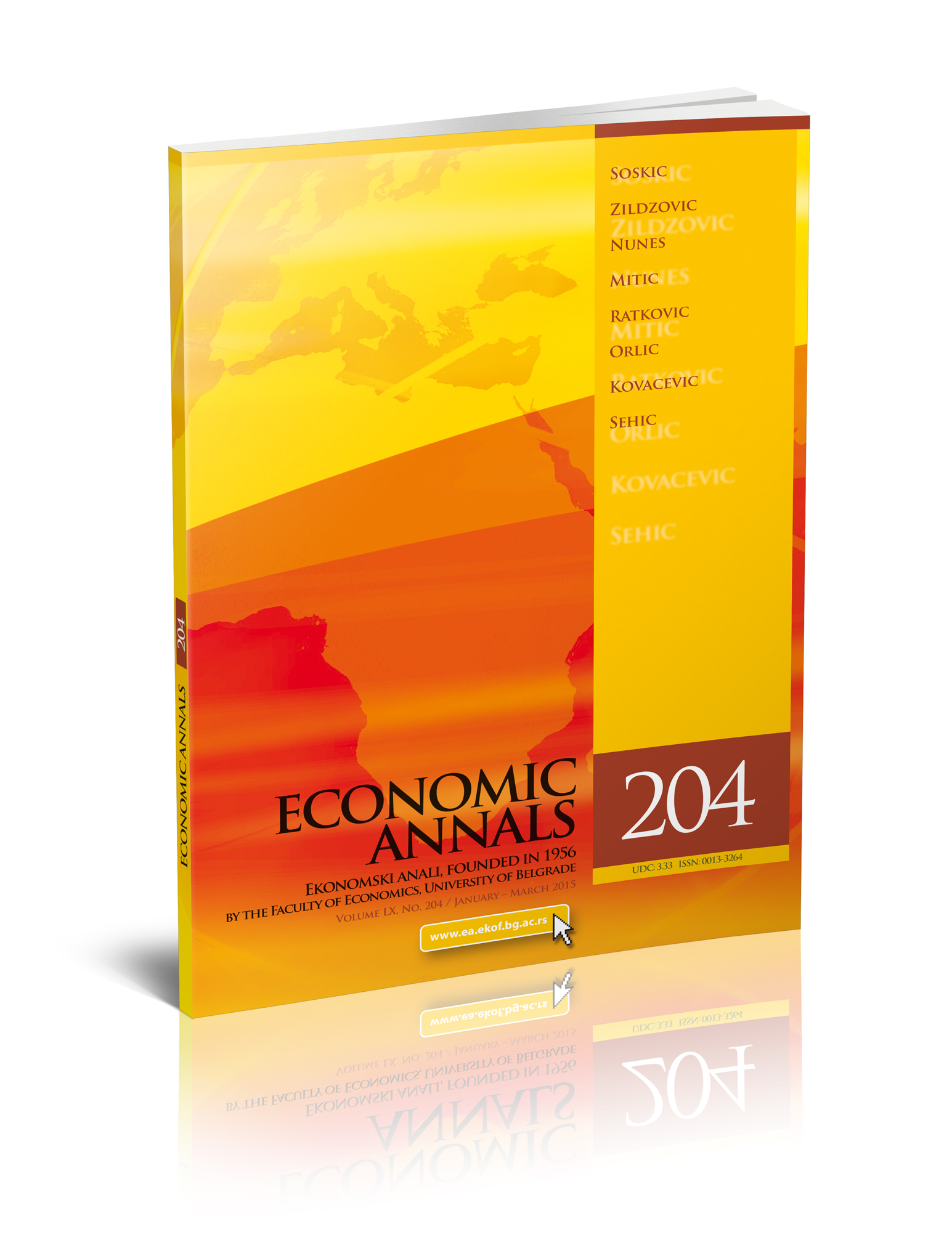EXTERNAL RELATIONSHIPS AND MARKETING PRACTICES IN SERBIAN FIRMS: THE INTANGIBLE CAPITAL PERSPECTIVE
##plugins.themes.bootstrap3.article.main##
##plugins.themes.bootstrap3.article.sidebar##
Sanja Mitić
Abstract
This paper presents selected results of research on intangible capital in Serbian firms. The results are part of a broader research project, based on a survey of a sample of Serbian firms. The focus of the project is the various forms of intangible capital, and in this paper we analyse whether and to what degree firms build up their brand capital and increase marketing competencies, and what kind of external relationships they experience. The results provide the first insight into the development of the marketing resources of Serbian firms and show that this element of intangibles is gradually improving but still is at a low level. We find significant differences in the use of marketing resources between firms in regard to their size, international market experience, and ownership type. A more significant development of brand capital, external relationships, and marketing innovations and competencies is found in larger firms, firms with considerable international business experience compared to firms primarily oriented to the domestic market, and in foreign-owned firms. After identifying the strengths and weaknesses of marketing practices in Serbian enterprises we suggest some measures for overcoming the analysed constraints in order to improve firms’ market positioning, especially in foreign markets.
##plugins.themes.bootstrap3.article.details##
Keywords
external relations, brand capital, intangible capital, marketing innovations
JEL Classification
M31, O34
Issue
Section
Articles
How to Cite
Mitić, S. (2015). EXTERNAL RELATIONSHIPS AND MARKETING PRACTICES IN SERBIAN FIRMS: THE INTANGIBLE CAPITAL PERSPECTIVE. Economic Annals, 60(204), 75-104. https://doi.org/10.2298/EKA1504075M
How to Cite
Mitić, S. (2015). EXTERNAL RELATIONSHIPS AND MARKETING PRACTICES IN SERBIAN FIRMS: THE INTANGIBLE CAPITAL PERSPECTIVE. Economic Annals, 60(204), 75-104. https://doi.org/10.2298/EKA1504075M

